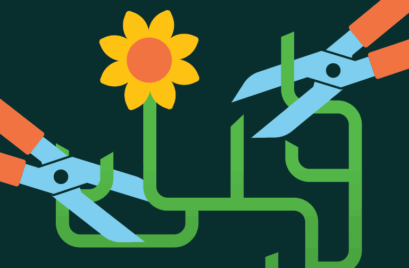
The Role of the Unconscious
Eureka! We’ve all heard the story of the magic moment when an idea comes to someone in a shower. A problem that has been playing on your mind all week suddenly finds its solution at the most unexpected time. Where did it come from? Did you even think about the problem once since the day it came up? What is this magical process? Are you secretly a genius?
“I think 99 times and find nothing. I stop thinking, swim in silence, and the truth comes to me.”
Albert Einstein
Fickle Creativity
We’ve been chasing the root of creativity for as long as humans have had ideas. Cultures (and organisations!) with high creativity have driven the world forward in countless different ways. Undoubtedly, this capability seems to move across the boundaries of our conscious and subconscious. Our dreams present wild flights of fancy. Ideas seem to “pop out” of nowhere. Bizarre practices often stimulate the creative muscle.
And there are adherents for every different type of creative process. David Lynch, the famous American film director who made Mulholland Drive, spends half an hour in transcendental meditation. Yoshiro Nakamatsu, one of the most prolific patent holders in the world, would dive underwater until a flash of genius struck him at the very end of his breath. And that’s not even to start with someone like Vincent Van Gogh.
So, is it all just wild creatives practicing idiosyncratic methods? Do you have to be one of these people and consecrate your life to the creative way?
The Creative Break
Creativity research is passing through a period of significant advancement. We are able to draw on a range of evidence explaining our case of the solution popping out of nowhere. In the research on creativity, this is the result of what’s called an “incubation period” and it appears to improve our creative thinking. Researchers have proposed that our unconscious mind does in fact keep working on a problem after being exposed to it and, sometimes, it will continue to work until an answer surfaces.
Typically, studies will give participants a problem to solve and then apply either a short or long incubation period by way of a distractive task. Participants will be immediately diverted onto this task taking them away from the problem in question. Those who have this incubation period perform better than those left to just solve the problem straight away.
What’s more, mind wandering has been identified as an important part of this process. Mind wandering occurs when we free associate different ideas without limiting the breadth of our thoughts. The more divergent and interesting the mind wandering, often the better ideas that come about afterwards. Fundamentally, this process involves the recombining of different stimuli and stretching the brain in diverse ways.
Putting it into Practice
While this may be all well and good, is it practical or useful as an innovation practice in the workplace? Absolutely! Try the following as you work to integrate the power of the incubation period into your workplace:
Work on creative problems across multiple sessions
Often organisations will try and get a problem solved in a one-off brainstorming session. However, what the incubation period tells us is this will not result in the most creative thinking. We need time for our unconscious to dig into the problem. Structure your creative thinking process across a short incubation period with multiple sessions.
Try: staggering your ideation sessions across the week.
Make the problem (or solution) exciting
The problem needs to be such that it excites some interest in your team, otherwise it is likely to drop off the conscious AND unconscious radar. Try and tap into the intrinsic motivations of your team. Why should there care about solving this problem? How might it help people? What exciting next step could it unlock for your team or organisation?
Try: get clear on the purpose of this innovation and the ‘Why’ for your team.
Provide diverse mind stimulations/wandering
For divergent thinking, mind wandering has been identified as a critical part of recombining thoughts and finding creative inspiration. By providing your team with fresh and interesting stimulus, you can encourage this type of thinking.
Try: send out visual stimuli in an email or explore an art gallery with your team.
Creativity is both a skill and a practice. There are simple things you can do to enhance this practice for yourself and your teams and, in turn, reap the benefits of greater innovation and more powerful problem solving.








